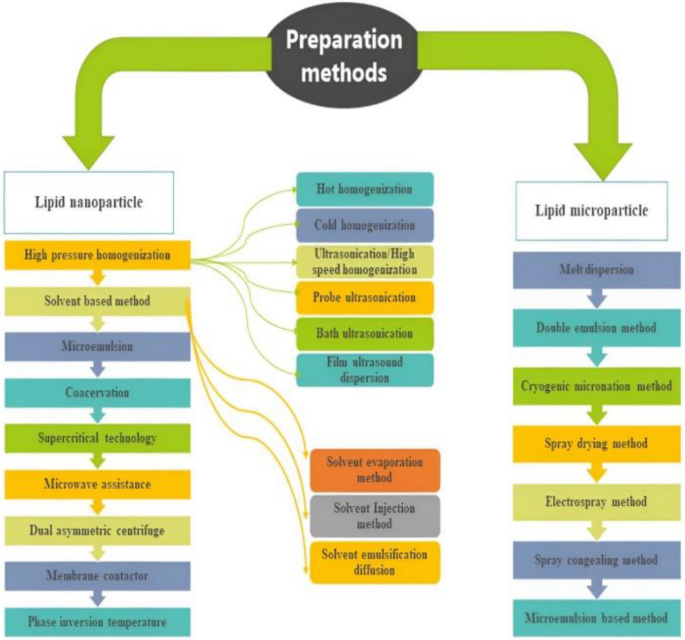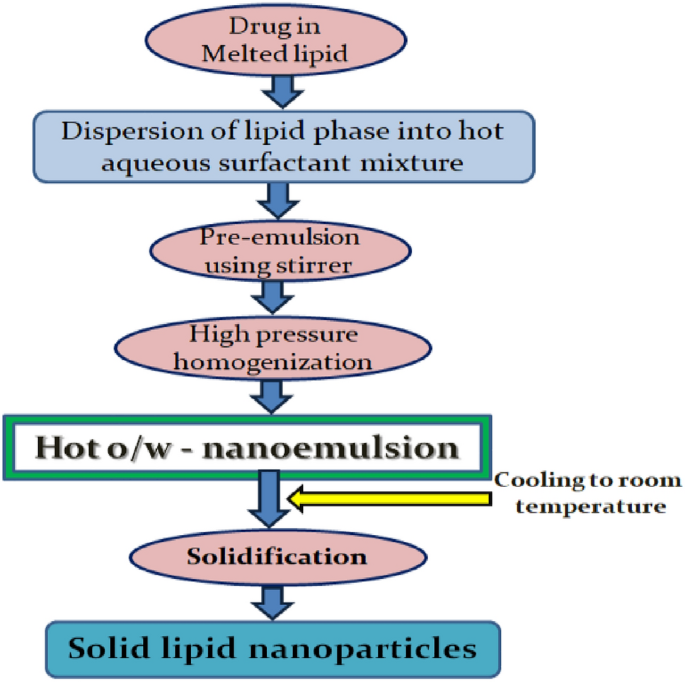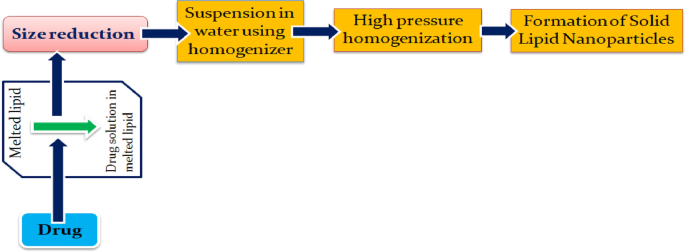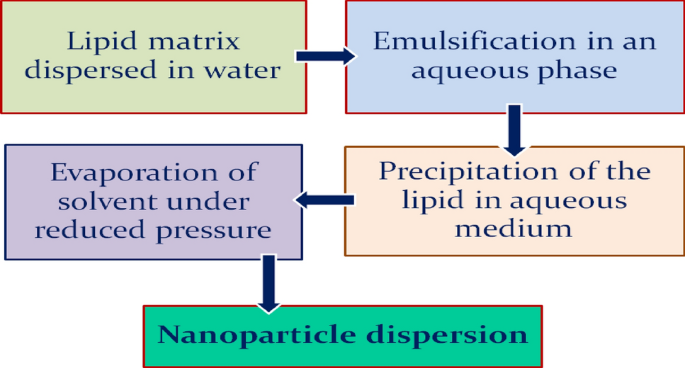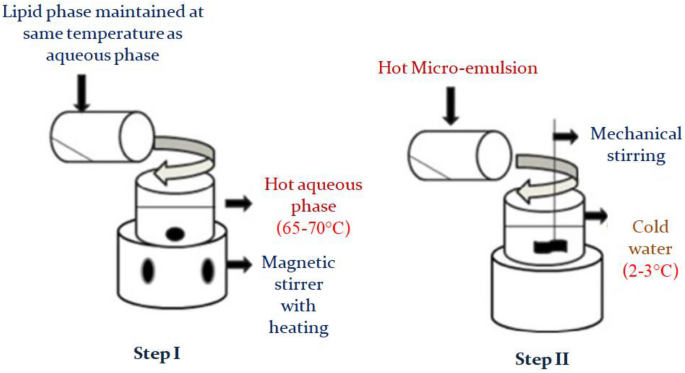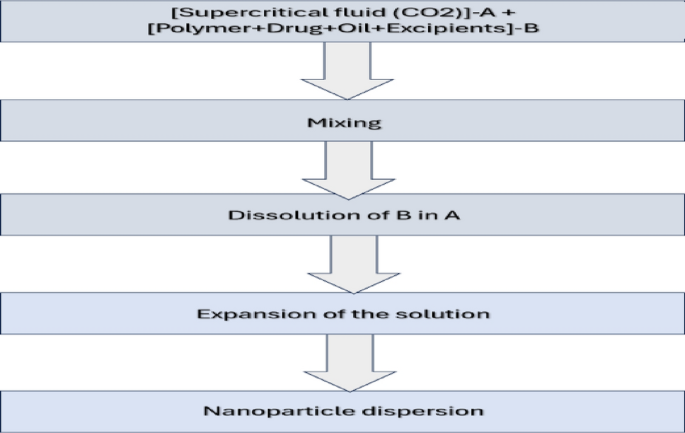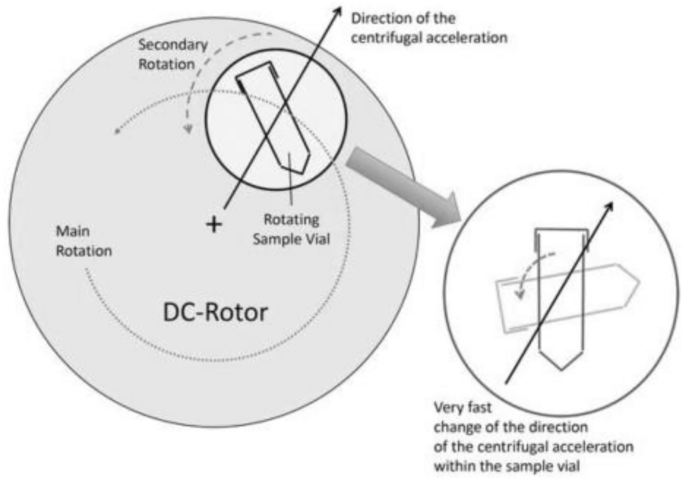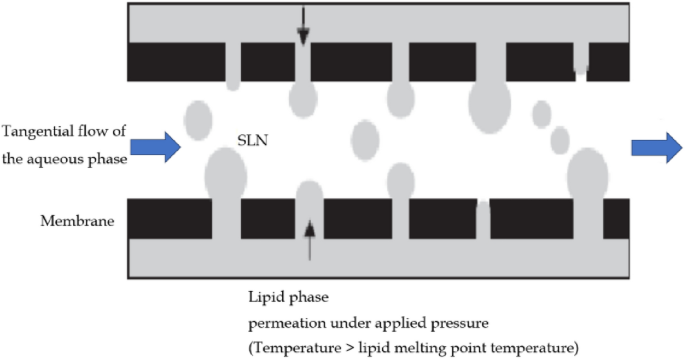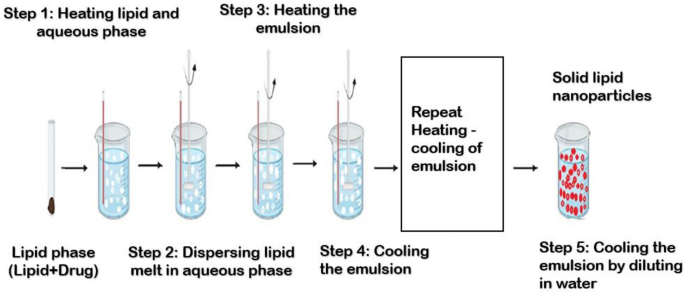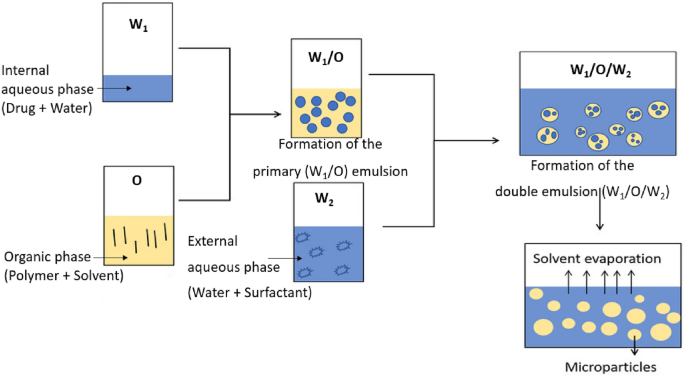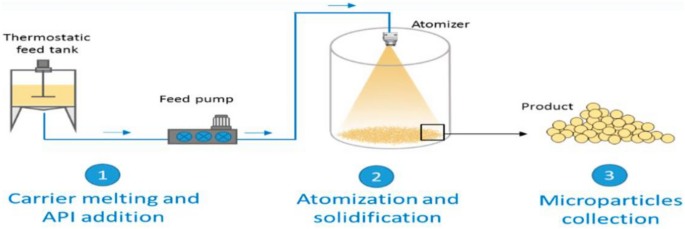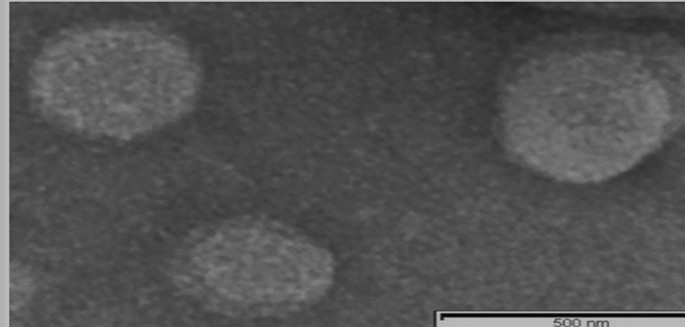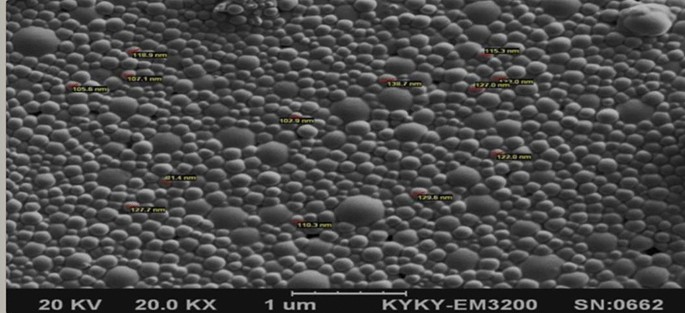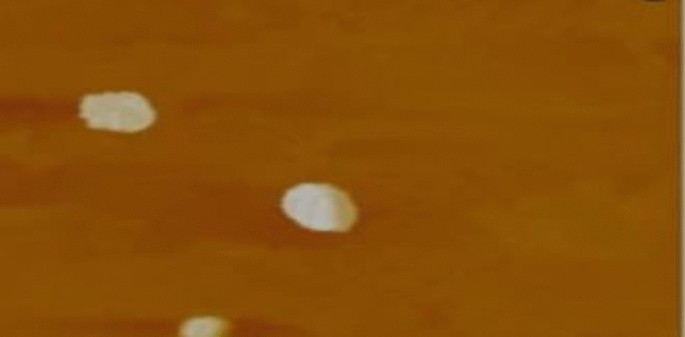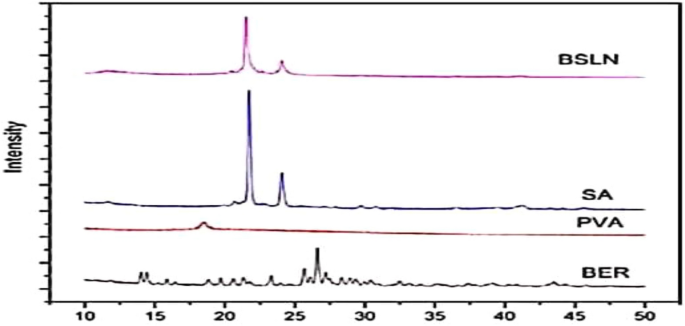Abstract
Lipid-based colloidal carriers, particularly Solid Lipid Nanoparticles (SLNs), offer a versatile platform for formulating hydrophobic drugs, presenting significant pharmaceutical implications across diverse fields. This paper explores methodologies utilized in SLN production, ranging from high-pressure homogenization to microemulsion techniques, with each method influencing the characteristics and efficacy of the resultant nanoparticles. Various administration routes for SLNs exist, leveraging the lipid matrix's protective properties to shield encapsulated drugs, thus minimizing degradation and enhancing therapeutic efficacy. Furthermore, SLNs exhibit sustained release properties, facilitating prolonged drug delivery and reducing the need for frequent dosing. Their small size and high surface area contribute to improved drug dissolution, enhanced bioavailability, and extended retention within the body. The existence of multiple patents underscores the substantial research conducted in the domain of SLNs, with numerous commercial formulations available globally. In conclusion, this work highlights the intricate nature of SLNs and their pivotal role in advancing drug delivery techniques. Ongoing efforts are directed toward overcoming challenges and exploring novel therapeutic avenues, highlighting the dynamic and evolving landscape of SLN research and application.
Article Highlights
-
Solid Lipid particles, typically ranging from 50 to 1000 nm, are composed of biocompatible and biodegradable lipids, offering numerous benefits over conventional drug delivery systems.
-
Recent advancements in preparation techniques have further enhanced the capabilities and applications of SLNs, making them a promising platform for delivering various therapeutic agents.
-
In the present article, we discuss various evaluation techniques tailored to assess different aspects of SLNs.
Similar content being viewed by others
Avoid common mistakes on your manuscript.
1 Introduction
Lipids encompass a variety of organic compounds, such as fats, hormones, surfactants, co-solvents, waxes, steroids, and phospholipids. They consist of a highly diverse assortment of molecules [1]. Lipids exhibit solubility in organic solvents while being insoluble in water. Lipids are mostly used to facilitate drugs that do not dissolve well in water and penetrate into the body completely. The cell membrane contains a crucial element composed of a glycerol backbone and two fatty acids, one hydrophilic and one hydrophobic [2, 3]. Nanotechnology surpasses micro- and macroparticles [4]. It has found applications in diverse areas of life sciences, such as drug delivery, diagnostics, nutraceuticals, biomaterial production, biomedicine, biosensors, nanoelectronics, energy production, food safety, and consumer products, among others [5]. One significant application is the ability to customize minuscule materials to achieve specific characteristics. Nanoparticles offer numerous benefits in the context of delivering drugs specifically to tumors. In addition, they can be used to immunize enzymes, improving the stability and effectiveness of biocatalysts, making molecules more potent, and increasing the drug loading capacity, among other things [6]. Solid lipid nanoparticles are types of lipid-based formulations with several benefits in drug delivery, drug development, and research [7]. Solid Lipid Nanoparticles (SLNs), and Nanostructured Lipid Carriers (NLCs) are colloidal carriers having a size range between 50 and 1000 nm with a lipid-forming core at both body and room temperatures [8]. SLN is a complex way to deliver drugs. In this composition, the Active Pharmaceutical Ingredient (API) is mixed with lipid carriers, like waxes, triglycerides, fatty acids, steroids, and partial glycerides. By using surfactants, we can stabilize the solid lipid nanoparticles [9].
SLNs are the most effective lipid-based colloidal carriers, divided into the following:
-
1.
The emulsion system: This comprises microemulsions, Self-nanoemulsifying Drug Delivery Systems nanoemulsions, and pickering emulsions.
-
2.
The vesicular system: It includes liposomes, niosomes, pharmacosomes, phytosomes, transferosomes, ethosomes, arthosomes, vesosomes, colloidosomes, and herbosomes.
-
3.
The lipid particulate system: It includes lipospheres, solid lipid microparticles, solid lipid nanoparticles, nanoparticles, lipid carriers, and lipid drug conjugates [10].
2 Formulation of solid lipid nanoparticles
SLNs commonly consist of lipids as matrix materials, along with emulsifiers, co-emulsifiers, and water as additional ingredients in their formulation. Charge modifiers, which are agents that enhance both the duration of circulation and the ability to target specific areas, are employed to fulfill the criteria of stability and targeting. The following is a list of different excipients utilized in the formulation of solid lipid nanoparticles [11].
2.1 Lipid matrix
Lipids are the primary constituents of the formulation and play a crucial role in determining the stability, release, and encapsulation of an API. An important issue with SLNs is their limited ability to accommodate hydrophilic drugs, primarily due to partitioning effects that occur during the production process. Only drugs with high potency and low dosages that are hydrophilic can be appropriately integrated into the solid lipid matrix. In lipid medication, while a surfactant interfacial region stabilizes the lipid drug core, the conjugates have a spherical morphology. Core lipids encompass fatty acids, acylglycerols, waxes, and combinations thereof. The surface stabilizers encompass bile salts, cholesterol, phospholipids, and sphingomyelins. Ligands enhance tissue targeting. Lipid-drug Conjugates allow for the inclusion of both water-loving (hydrophilic) drugs, such as doxorubicin and tobramycin, as well as fat-loving (lipophilic) drugs, such as progesterone and cyclosporine A. The lipids utilized in the formulation of solid lipid nanoparticles include the following [12]: beeswax, behenic acid, caprylic/capric triglyceride (Miglyol 812), cetyl palmitate, cholesterol, glyceryl trilaurate (Dynasan 112), glyceryl trimyristate (Dynasan 114), glyceryl monostearate, glyceryl tristearate (Dynasan 118), glyceryl behenate (Compritol), glyceryl monostearate (Imwitor 900), glyceryl tripalmitate (Dynasan 116), hardened fat (Witepsol E 85), monostearate monocitrate, and glycerol (Acidan N12), propylene glycol palmitic stearate, Precirol ATO 5 (mono, di, and triglycerides of C16-C18 fatty acids), Softisan 142/cetyl alcohol (75:25), Softisan 142, solid paraffin, stearic acid, superpolystate, Syncrowax HRSC (mixture of glycerol, tribehenate, and calcium behenate), Witepsol E 85/cetyl alcohol (75:25), Witepsol H5, and Witepsol W3.
2.2 Surfactants
Surfactants are employed to enhance the colloidal stability of particles during the manufacturing process of traditional SLNs. SLNs also have different physical and chemical properties depending on the surfactant’s composition and concentration. Surfactants have two important functions: they disperse the lipid melt in the aqueous phase and stabilize the lipid nanoparticles in dispersions after cooling. The primary considerations when employing surfactants in the formulation of solid lipid nanoparticles are their safety and compatibility with other excipients. Surfactants can enhance the permeability of epithelial cells and overcome any constraints in the absorption of drugs [13].
2.3 Co-surfactants
Differential scanning calorimetry and static light scattering are used to look at how co-surfactants affect the crystallization patterns and physical durability of SLNs. Research indicates that the most suitable co-surfactants are amphiphilic, meaning they have both hydrophobic and hydrophilic properties. These co-surfactants should have significant hydrophobic regions and also be highly soluble in water. This can allow them to have a readily available supply of molecules for stabilizing interfaces [14].
2.4 Emulsifiers
The selection of an emulsifier significantly influences the quality of solid lipid nanoparticles. Enhancing the emulsifier concentration facilitates the reduction of surface tension and particle partitioning during homogenization. Decreasing the size of particles results in an augmentation of the exposed surface area. Emulsifiers must possess the following characteristics: non-toxicity, compatibility with other excipients, the ability to generate the desired size with minimal quantity, and the ability to ensure sufficient stability for the SLNs by coating their surface. They enhance the circulation of SLNs by inhibiting the Reticuloendothelial System and enhancing the delivery of drugs to the brain [15].
The emulsifiers include phosphatidylcholine 95% (Epikuron 200), soy lecithin (Lipoid S 75, Lipoid S 100), egg lecithin (Lipoid E 80), poloxamer 188 (Pluronic F 68), poloxamer 407, poloxamine 908, polysorbate 80, Cremophor EL, and Solutol HS.
2.5 Co-emulsifiers
Vesicle-bound phospholipid molecules display restricted mobility. Consequently, they lack the capacity to promptly envelop the recently formed interfaces, while solid lipids undergo recrystallization. The limited mobility of phospholipid molecules causes particle aggregation and an increase in the size of SLNs when there is a sudden absence of an emulsifier on the particle's surface. To prevent this, co-emulsifiers, such as glycocholate (an ionic substance) and tyloxapol (a nonionic polymer), are used. These include tyloxapol, taurocholate sodium salt, taurodeoxycholic acid sodium salt, sodium dodecyl sulfate, sodium glycocholate, sodium oleate, cholesteryl hemisuccinate, and butanol [16].
2.6 Cryoprotectants
Cryoprotectants are typically required in the process of lyophilization to reduce or eliminate the aggregation of solutes or suspended substances. The following are examples of these substances: trehalose, glucose, mannose, maltose, lactose, sorbitol, mannitol, glycine, Polyvinylpyrrolidone (PVP), Polyvinyl Alcohol (PVA), and gelatin [17].
2.7 Charge modifiers
Surface modifiers, such as hydrophilic polymers, can be used to decrease the uptake of lipid nanoparticles by the reticuloendothelial system. These include the following: stearylamine, dicetyl phosphate, Dipalmitoylphosphatidylcholine (DPPC), Dimyristoylphophatidylglycerol (DMPG), polyethylene glycol, and poloxamer [18].
2.8 Agents for improving circulation time
By employing suitable biocompatible polymers, such as polyethylene glycol, the duration of circulation could be prolonged and the absorption process could be enhanced. An example is thiomersal [19].
2.8.1 Advantages of SLNs [20]
The following are listed the advantages of SLNs:
-
1.
Regulate and direct the release of drugs.
-
2.
Have exceptional compatibility with living organisms.
-
3.
Improve the stability of pharmaceuticals.
-
4.
Involve elevated and intensified drug concentration.
-
5.
Simple to sterilize and possess increased size.
-
6.
Enhance the regulation of the rate at which enclosed substances are released.
-
7.
Improve the body's ability to absorb and use trapped bioactive compounds.
-
8.
Safeguard labile-incorporated compounds through chemical protection.
-
9.
Significantly more straightforward to produce compared to biopolymeric nanoparticles.
-
10.
No requirement for a specific solvent.
-
11.
Traditional methods for manufacturing emulsions can be used.
-
12.
The raw materials needed are identical to those used in emulsions.
-
13.
The level of long-term stability is significant.
-
14.
There is a greater degree of versatility.
-
15.
The process of commercial sterilization can be utilized.
-
16.
Controlled drug release and drug targeting are possible.
-
17.
Drug stability is enhanced.
-
18.
A high drug payload is achieved.
-
19.
The carrier does not exhibit bio-toxicity.
-
20.
The need for organic solvents is eliminated.
-
21.
Both lipophilic and hydrophilic drugs can be incorporated, and the bioavailability of entrapped bioactive compounds is enhanced [22].
-
22.
There are no issues related to the manufacturing and sterilization of this product on a large scale.
-
23.
It is a novel additive used in vaccines.
-
24.
SLNs are extensively employed in cancer treatment.
2.8.2 Disadvantages of SLNs [21]
The disadvantages of SLNs are the following:
-
1.
Particle agglomeration is possible.
-
2.
Unforeseeable propensity for gelation.
-
3.
Unforeseen kinetics of polymeric phase changes.
-
4.
Burst release
SLN is a carrier that is used to specifically target a particular site. SLNs can be used to deliver neuropharmaceuticals. Solid lipid nanoparticles can be formulated in various forms, such as nanosuspensions, nanocrystals, nanogels, liposomes, niosomes, nanoparticles, and nanostructured lipid carriers [23]. The administration of SLNs can be achieved through multiple routes, including parenteral, oral, rectal, nasal, respiratory, ocular, topical, perioral, and ophthalmic routes [24]. Although the topical route is considered the most advanced for solid lipid nanoparticles, it is important to note that the skin serves as a protective barrier between the body and the external environment, shielding against harmful external factors. Nevertheless, this method is extensively employed for systemic delivery through topical administration and holds promise in therapy due to its substantial surface area [25]. To prevent fluctuations in plasma concentration, it is important to avoid first-pass metabolism, minimize the occurrence of severe side effects in the bloodstream, and increase bioavailability [26]. Gels are uniform, semi-solid preparations containing one or more drugs in a hydrophilic or hydrophobic base. Gels are typically liquid phases that have been thickened using appropriate substances, such as gelling agents like Carbopol, sodium CMC, and HPMC, as well as antioxidants, stabilizers, and antimicrobial preservatives [27]. They offer numerous benefits in the treatment of chronic arthritis and osteoarthritis. They sustain optimal levels of plasma concentration [28,29,30,31]. There are several companies marketing drugs as SLNs and there are also a few patents on SLNs, which are listed in Tables 1 and 2.
The key objective of the present study is to highlight all possible methods for the preparation of solid lipid nanoparticles and solid lipid microparticles and their evaluation techniques.
SLNs present a promising avenue for drug delivery due to their potential to enhance drug bioavailability, stability, and targeting. However, they encounter several challenges and limitations that require attention for their effective utilization. One significant constraint lies in their limited loading capacity for hydrophobic drugs, stemming from the constraints of the lipid matrix. Moreover, issues, such as physical instability during storage, drug leakage, and scale-up challenges, pose hurdles in their widespread application. Additionally, SLNs may not be optimal for delivering large biomolecules due to size constraints and potential degradation risks. Furthermore, their tissue penetration capabilities can be limited, impacting applications, like cancer therapy. Achieving desired drug release kinetics, ensuring biocompatibility, and addressing concerns regarding immunogenicity are also critical considerations. Moreover, enhancing targeting efficiency remains a challenge, necessitating innovative approaches, such as surface modification and combination strategies. Addressing these challenges through formulation optimization, advanced characterization techniques, and innovative methodologies is imperative for maximizing the potential of SLNs in drug delivery. Various preparation methods are illustrated in Fig. 1
3 Lipid nanoparticles preparation
3.1 High-pressure homogenization (HPH)
This technique is both reliable and powerful, and it is specifically employed for the production of SLNs. High-pressure homogenizers propel a liquid at elevated pressures (100–2000 bar) through a narrow aperture, typically measuring only a few microns in width. The fluid undergoes rapid acceleration, transitioning from a short distance to a velocity exceeding 1000 km/h. Intense shear stress and cavitation forces cause the particles to break down into sizes smaller than a micron. Typically, a lipid content of 5–10% is utilized, although research has also explored lipid contents as high as 40%. There are two main methods employed for HPH, namely hot homogenization and cold homogenization, both of which involve the process of mixing the drug with a large quantity of melted lipid [55].
3.1.1 Hot homogenization
Hot homogenization is performed at temperatures that exceed the lipid's melting point, making it equivalent to emulsion homogenization. A pre-emulsion is made by mixing the drug-loaded lipid melt with the water-based emulsifier phase in a high-shear mixer at the same temperature. High-pressure Homogenization (HPH) of the pre-emulsion is conducted at temperatures that exceed the lipid’s melting point. The steps involved in the preparation are illustrated in Fig. 2. Typically, elevated temperatures lead to reduced particle sizes as a result of the decreased viscosity of the inner phase. Nevertheless, elevated temperatures amplify the rate at which the drug and the carrier deteriorate. Higher homogenization pressure or an increased number of cycles frequently lead to larger particle sizes as a result of the particles' elevated kinetic energy [56].
3.1.2 Cold homogenization
Cold homogenization was proposed as a way to fix some problems with hot homogenization, such as the fact that high temperatures break down drugs, drugs mix with water during homogenization, and the nanoemulsion’s complicated crystallization process, which often leads to multiple changes and/or supercooled melts. This procedure involves cooling a drug that contains lipids, and then grinding the solid lipid into tiny particles. These microparticles are then dispersed in a cold surfactant solution, resulting in a pre-suspension. After that, the pre-suspension is mixed evenly at room temperature or lower, where gravity is strong enough to break up the lipid microparticles directly into solid lipid nanoparticles [57]. The details of the steps involved in this process are illustrated in Fig. 3.
3.1.3 Ultrasonication/high-speed homogenization
SLNs can also be prepared using ultrasonication or high-speed homogenization technique. In order to achieve a smaller particle size, a combination of ultrasonication and high-speed homogenization is necessary [58].
3.1.4 Bath ultrasonication
A bath sonicator is the preferred choice for processing large quantities of diluted lipid dispersions. Bath sonication involves immersing the sample container in a water bath equipped with an ultrasonic transducer. The transducer generates high-frequency sound waves, leading to the formation of cavitation bubbles in the liquid. The implosion of these bubbles generates intense localized energy, promoting emulsification and dispersion. The primary goal of bath sonication in SLN preparation is to reduce the particle size of the lipid dispersion. Smaller particle sizes contribute to increased surface area, improved drug loading, and enhanced bioavailability. During sonication, the energy generated helps break down larger lipid droplets into smaller ones, facilitating the formation of a stable emulsion. This emulsion serves as a precursor for the subsequent solidification of lipids into nanoparticles.
3.1.5 Probe ultrasonication
The probe sonicator is ideal for dispersing substances that necessitate a substantial amount of energy within a confined volume. Probe tip sonicators utilize energy to treat lipid dispersions, but excessive heat can cause lipid degradation. Before use, centrifugation should remove any metal particles that may have leaked from the sonication tips into the dispersion.
3.1.6 Film ultrasound dispersion
In this method, lipids and drug compounds are dissolved in organic solvents, and then the solvents are removed to create a lipid film. An aqueous solution with emulsions is then added. Small and uniform SLNs are formed using ultrasound and a diffuser probe [58].
3.2 Solvent-based method
The solvent-based technique is one of the methods employed in the production of SLNs. It includes dissolving both the lipid and, if desired, the drug in a solvent, and then forming SLNs by eliminating the solvent.
3.2.1 Solvent evaporation method
SLNs can also be prepared using the solvent evaporation method. The hydrophobic substance is dissolved in an organic solvent that is not soluble in water, such as cyclohexane, and then mixed with an aqueous solution to form an emulsion. When the solvent evaporates, the lipid precipitates in the aqueous medium, resulting in the formation of a nanoparticle dispersion with an average size of 25 nm [59]. The solution is dispersed in a water-based phase through the process of high-pressure homogenization. The emulsion is then subjected to evaporation under reduced pressure (40–60 mbar) in order to remove the organic solvent [59].
3.2.2 Solvent injection method
This method involves dissolving the lipid and, optionally, the drug in an organic solvent, and then injecting this solution into an aqueous phase. The rapid diffusion of the solvent into the aqueous phase results in the precipitation of the lipid, forming solid lipid nanoparticles. This method allows for the formation of SLNs without the need for high shear forces and high temperatures, making it suitable for heat-sensitive compounds. An injection rate may be necessary to achieve the desired SLN characteristics for a particular application.
3.2.3 Solvent emulsification-diffusion method
This technique allows for particles with average diameters ranging from 30 to 100 nm. The primary benefit of this technique is the dissipation of heat during the preparation process [60]. A schematic representation of the steps involved in the solvent emulsification-diffusion method is provided in Fig. 4.
3.3 Microemulsion-based method
This approach relies on the process of diluting microemulsions. Micro-emulsions are biphasic systems consisting of an inner and outer phase, such as o/w microemulsions. Their production involves agitating a transparent blend at a temperature range of 65–70 °C. This blend usually consists of a fatty acid with a low melting point (such as stearic acid), an emulsifier (such as polysorbate 20), co-emulsifiers (such as butanol), and water. The heated microemulsion is evenly distributed in chilled water (2–3 °C) while being agitated (Fig. 5). The spread of SLN can be used as a granulation fluid to turn into a solid product, like tablets or pellets, for the granulation process. However, when the particle concentration is low, a significant amount of water must be eliminated. Significant temperature differences promote the quick formation of lipid crystals and prevent clumping. When a dilution step is added to a formulation, the amount of lipids that can be reached is much lower than when high-pressure homogenization is used [61, 62].
Steps in Micro-emulsion method for the preparation of solid lipid nanoparticles. The data are downloadable at https://doi.org/10.23893/1307-2080.APS.05616 and accessible at Semantic Scholar website at https://www.semanticscholar.org/paper/Solid-lipid-nanoparticles%3A-a-promising-technology-Bhatt-Sharma/59b330fe3c8eb42506839c745e6fac039dde74e5
3.4 Coacervation
The coacervation method has been recently reported in the literature as a solvent-free technique for preparing SLNs. This technique entails the process of counteracting alkaline salts of fatty acids by using an acidic solution while stabilizing agents are present. This results in the formation of solid lipid micelles composed of fatty acids. The coacervation technique provides a practical and easily attainable method to overcome the limitations in the preparation process of SLNs. This method has the potential to revolutionize the production of SLNs, offering a more efficient and cost-effective way to prepare nanoparticles for drug delivery. So, the coacervation method is an exciting development in the field of nanoparticle technology and has the potential to play a significant role in enhancing drug delivery methods [63].
3.5 Supercritical technology
The supercritical fluid technique employs supercritical carbon dioxide to extract oil-in-water (o/w) emulsions. This method has been suggested for creating micro/nanoparticles with a high level of encapsulation effectiveness for various types of medications, including ketoprofen, indomethacin, and camptothecin. The resulting substance is a desiccated powder with a limited range of particle sizes, improved ability to flow, and a reduced amount of remaining organic solvent. This enhances the creation of enhanced liquid or solid drug formulations. The method is ecologically sustainable and has the capacity to be expanded [64]. Steps involved in the preparation by supercritical technology in shown in Fig. 6.
3.6 Microwave assistance
Microwave irradiation is a highly efficient method for producing nanoemulsions. It enables the creation of sub-50 nm cross-linked particles with good polydispersity in a single step, without requiring surfactants. Furthermore, microwave-assisted synthesis can generate smaller nanoparticles with reduced polydispersity compared to traditional heating methods. This is attributed to the precise localized heating and minimal temperature variances achieved by microwave heating. Additionally, microwave synthesis typically results in enhanced reaction rates and product yields due to rapid, uniform dielectric heating. In contrast, conventional heating initially warms the vessel walls, causing slower reactions and lower yields as the heat gradually spreads to the reaction mixture [65].
3.7 Dual asymmetric centrifuge
Dual centrifugation is a novel method employed for the production of liposomes and other lipid nanoparticles. For over ten years, this technology has been utilized and consistently improved to produce a range of lipid nanoparticles, such as emulsions, SLNs, polymersomes, and nanocrystals. In recent years, there have been significant advancements in equipment technology, leading to the increasing adoption of dual centrifugation as the preferred method for producing lipid nanoparticles and nanocrystals in small and medium batch sizes. This approach offers simplicity, speed, and sterility in the production process. Additionally, it provides the opportunity for efficient and rapid formulation screening or on-site preparation of therapeutic nanoparticles. Dual centrifugation is a distinctive procedure that entails placing a sample vial in a high-speed centrifuge (primary rotation) and then rotating it around a second axis (secondary rotation), Fig. 7. The centrifugal acceleration, characterized by its high magnitude, undergoes constant changes in direction with respect to the sample vial. As a consequence, the sample material experiences frequent and vigorous movements within the vial. Zirconia beads with high weights are commonly included to facilitate the process. The vigorous sample motions can be employed for the purposes of blending, agitating, grinding, or standardizing [66].
Dual asymmetric centrifuge method for the preparation of solid lipid nanoparticles. The data are downloadable at https://doi.org/10.5772/intechopen.68523
3.8 Membrane contractor
The membrane contactor method is also utilized to prepare SLNs. The process involves pressing the lipid through the membrane pores at a temperature exceeding the lipid's melting point. Water is then circulated beyond the pores, resulting in the formation of droplets of melted lipid that are cooled at room temperature (Fig. 8). This method offers several benefits, including ease of use, the ability to control the size of the SLNs by selecting the appropriate process parameters, and scalability. Additionally, the membrane contractor technique is utilized to prepare polymeric nanoparticles using the interfacial polymerization method or the nanoprecipitation method, which involves the dispersion of preformed polymers [67].
Preparation of solid lipid nanoparticles by membrane contractor method. The data are downloadable at https://doi.org/10.22270/jddt.v9i2.2461
3.9 Phase inversion temperature
The PIT (Phase-inversion Temperature) method is a highly efficient, low-energy approach employed to control the solubility of polyethoxylated nonionic surfactants by altering the temperature. When exposed to elevated temperatures, the surfactant undergoes a change in its properties, becoming hydrophobic. This leads to the formation of reverse micelles that have negative curvatures and are swollen with water. The TPIT (specific temperature) is the temperature at which the surfactant exhibits equal attraction towards both oil and water phases, leading to a complete absence of spontaneous curvature and significantly reduced interfacial tension. Under the TPIT, nonionic surfactants that have absorbed water create small droplets that have a high level of solubility in water. By employing the PIT method, several studies have effectively generated SLNs utilizing stearic acid as the solid lipid component. Upon cooling, stearic acid undergoes solidification, resulting in the formation of a solid core that encases the solid surfactant shell, which consists of tween 60 and span 60, respectively. Notably, the PIT method has also been extensively employed for the preparation of nanoemulsions containing volatile oils. Prior research has indicated that the combination of volatile and fixed oils in an optimized proportion can result in the formation of small droplets and high-quality, stable nanoemulsions Fig. 9. The composition and concentration of surfactant are among several factors that influence the creation and characteristics of nanoemulsions.
Preparation of solid lipid nanoparticles by phase inversion temperature method. The data are downloadable at https://doi.org/10.1080/10837450.2022.2084554
4 Lipid microparticles preparation methods
4.1 Melt dispersion
The melting dispersion method is an approach that is very effective when it comes to the production of SLNs. The first step is to melt the drug and the solid lipid in an organic solvent, which serves as the oil phase. In order to achieve the same temperature, the oil phase and the water phase are both heated. The second step involves adding the oil phase to a portion of the water phase, and then vigorously stirring the resulting emulsion at a higher revolution per minute for a number of hours. Finally, in order to form the SLNs, the mixture is allowed to cool down to room temperature. In contrast to the method of solvent emulsification and evaporation, the melting dispersion method does not require the evaporation of any organic solvent. It is still more reliable than the ultrasonication method, despite the fact that the reproducibility of this method is lower than that of the solvent emulsification-evaporation method.
4.2 Double emulsion method
In this method, the drug is contained within a stabilizer that keeps it separate from the water phase on the outside, while the solvent evaporates in the water phase on the outside of the w/o/w double emulsion [68]. The method of preparation by double emulsion is illustrated in Fig. 10
Preparation of solid lipid microparticles by double emulsion method. The data are downloadable at https://doi.org/10.1016/j.jsps.2012.05.009
4.3 Cryogenic micronization method
Cryogenic spray processes are highly effective methods for reducing the size of particles, which can greatly improve the rate at which drugs that are not easily soluble dissolve. They successfully produce nanostructured, amorphous drug particles with a high level of porosity at extremely low temperatures. Following cryogenic processes, a range of drying methods, such as spray freeze drying, atmospheric freeze drying, vacuum freeze drying, and lyophilization, can be employed to generate dry powders. Various cryogenic spray techniques can be utilized, including spray freezing onto cryogenic fluids, Spray Freezing into cryogenic Liquids, spray freezing into vapor over liquid, and ultra-rapid freezing for the production of smaller drug particles with enhanced wettability. Halocarbons, chlorofluorocarbons, and liquid nitrogen can be used as cryogenic media in the traditional process of spray freezing into vapor. A nozzle located above the refrigerant that is boiling transforms the feed solution into tiny droplets. The fragmented droplets subsequently descend into the refrigerant and promptly solidify upon coming into contact with the cryogen. The solidified substance is gathered and subjected to lyophilization in order to eliminate the solvent. Nevertheless, the utilization of chlorofluorocarbons as a cryogenic medium in this procedure is severely restricted due to their detrimental impact on the ozone layer. Even certain substitutes for chlorofluorocarbons, like hydrofluoroalkanes, have the ability to dissolve the API and reduce the effectiveness of the powdered formulation. The spray freezing into vapor process involves the atomization of liquid gas into nitrogen vapor. This can cause droplets to slowly stick together and harden, which can create dry powders that are not micronized and have a wide range of particle sizes [69].
4.4 Spray drying method
It is a substitute for the lyophilization process. This involves the utilization of lipids that have melting points exceeding 70 °C. The most optimal outcomes are achieved using a 1% concentration of SLN in a solution of trehalose in water or a 20% trehalose solution in a mixture of ethanol and water [70].
4.5 Electrospray method
Electrospray is an effective technique that uses an electric field to convert liquids into fine particles. The control of particle size and shape can be optimized by adjusting variables, such as liquid flow rate and applied voltage. Electrospray is a simple, single-step method that allows for the management of several processing parameters (Fig. 11). Furthermore, electrospray outperforms other methods by preventing any adverse effects on biomolecules [71]
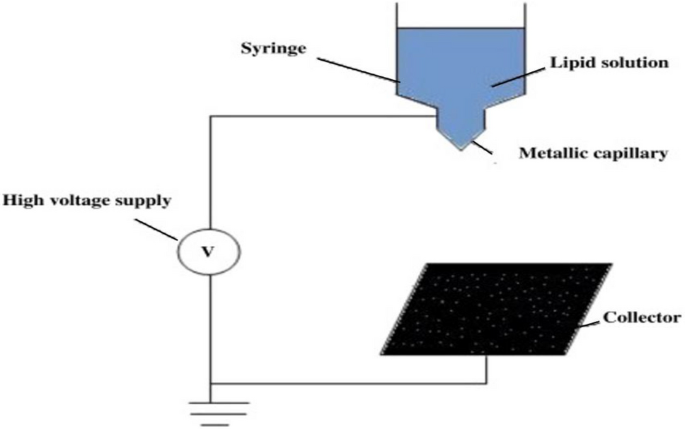
Source: The document is downloadable with https://doi.org/10.1016/B978-0-12-817923-9.00005-5 from ScienceDirect
Electrospray method for the preparation of solid lipid microparticles.
4.6 Spray congealing method
Spray congealing and fluid bed hot melt coating are popular techniques for cost-effective and solvent-free processing when lipid excipients are the principal components of the formulation [7, 8]. Spray congealing, also known as spray chilling or cooling, involves atomizing a molten slurry that typically contains an API in a melted carrier. This is done in a chamber where the temperature is maintained below the melting point of the carrier [1, 9]. The droplets immediately solidify when they come in contact with cold air, resulting in the rapid formation of Solid Lipid Microparticles [1]. These techniques are highly efficient and well-established in the industry (Fig. 12), making them a reliable choice for pharmaceutical manufacturers [72].
Spray congealing method for the preparation of solid lipid microparticles. This document is downloadable at https://doi.org/10.3390/molecules24193471
4.7 Microemulsion-based method
Emulsions are a highly effective precursor for the formation of solid lipid particles. Heating lipids that are solid at a normal temperature up to 5–10 °C above their melting point can readily convert them into a liquid condition. Subsequently, this fluid lipid can be combined with water at an identical temperature, leading to the creation of a heated emulsion. Lowering the temperature of this emulsion to the ambient room temperature results in the solidification of the droplets, leading to the formation of solid lipid particles. If the interest is to generate solid lipid particles from heated emulsions with droplet sizes larger than 1 μm, the melt dispersion technique, sometimes referred to as Selective Laser Melting, is an excellent choice. Preceding substances, such as oil-in-water (o/w) or multiple water-in-oil-in-water (w/o/w), can be utilized [73].
The glycerides are dissolved in an organic solvent, such as chloroform. The solution becomes emulsified in water after the organic solvent evaporates, which causes the lipid to precipitate and nanoparticles to form [74, 75].
5 Characterization parameters
5.1 Physicochemical characterization of solid lipid nanoparticles
The physicochemical parameters of SLNs and their characterization techniques are listed below.
-
(1)
Visual size and distribution
-
i.
Photon correlation spectroscopy
-
ii.
Laser diffraction
-
iii.
Dynamic light scattering
-
iv.
Static laser spectroscopy
-
i.
-
(2)
Electrical surface potential
-
i.
Zeta potential
-
ii.
pH-sensitive probe [76]
-
i.
-
(3)
Shape and surface morphology
-
i.
Transmission electron microscopy
-
ii.
Scanning electron microscopy
-
iii.
Atomic force microscopy
-
iv.
Optical microscopy [77]
-
i.
-
(4)
Crystallinity
-
i.
X-ray diffraction
-
i.
-
(5)
Surface hydrophobicity
-
i.
Two-phase partition
-
ii.
Contact angle measurement
-
i.
-
(6)
Density
-
i.
Gas pycnometer
-
i.
-
(7)
Viscosity
-
i.
Viscometer [78]
-
i.
-
(8)
Molecular weight
-
i.
Gel permeation chromatography
-
ii.
In vitro drug release
-
1.
Dialysis tubing
-
2.
Reverse dialysis
-
3.
Trans diffusion cell
-
1.
-
i.
-
(9)
Entrapment efficiency [79]
6 Characterization of solid lipid nanoparticles
6.1 Visual size distribution
6.1.1 Photon correlation spectroscopy (PCS)
PCS quantifies the fluctuations in light scattering by tracking the motion of particles. The measurement encompasses a size range spanning from a few nanometers to 3 microns. Various factors influence the relationship between the diffraction angle and the particle radius [73].
6.1.2 Laser diffraction (LD)
LD has the advantage of covering a broad spectrum, ranging from nanometers to smaller millimeters. The sensitivity of LD to small particles is enhanced by the increase in polarization intensity differential scattering [80].
6.1.3 Dynamic light scattering
It measures the variation in the strength of the dispersed light within a time interval of microseconds. The phenomenon of Brownian motion causes the scattering of light, which can be measured by calculating the autocorrelation function. This coefficient (Van de Ven et al., [82]). [81] is used to measure certain factors, such as the size, low concentration, and viscosity.
6.1.4 Static light scattering (SLS)
Fraunhofer diffraction is an alternative name for this technique. This method involves collecting the scattered light pattern from a solution of particles and incorporating it into an electromagnetic equation. The method is both challenging and efficient [82].
6.2 Electrical surface potential and pH
6.2.1 Zeta potential
The measurement can be performed using a zeta potential analyzer or zettameter. Zeta potential provides an insight into the strength of the electrostatic repulsion or attraction between particles. The SLN aqueous suspension contains particles [83].
6.2.2 pH-sensitive probes
A pH probe is a scientific instrument used to measure the concentration of hydrogen ions in aqueous solutions. It provides information about the acidity and alkalinity of substances based on their pH. The Nernst equation (Karmen et al., [85]) [84] is used to estimate the magnitude of electrochemical potential.
6.3 Shape and surface morphology
6.3.1 Transmission electron microscopy
An intense electron beam is directed towards the analyte, which consists of very fine particles, resulting in electron–electron interactions. The atoms can be utilized to observe characteristics, such as the crystal structure as well as specific features within the structure, including dislocations and grain boundaries [85]. Figure 13
Transmission electron microscopy (TEM) of reconstituted SLN. This document is downloadable and accessible at website—https://doi.org/10.3390/molecules28041545
6.3.2 Scanning electron microscopy
The process involves generating sample images through the use of a focused electron beam that is directed onto the surface. Electrons engage with samples and generate diverse signals that encompass details regarding the surface topography and composition of the sample [86]. SEM picture is shown below in Fig. 14.
Scanning electron microscopy picture of curcumin solidlipid nanoparticles. This document is downloadable and accessible at website https://doi.org/10.15171/apb.2016.04
6.3.3 Atomic force microscopy
This pertains to the presence of colloidal particles in opposition to current flow within the sample. The topological map tracks the movement between the tip and surface based on the exerted forces, Fig. 15. This methodology enables achieving an extremely high level of detail in the sample [87, 89].
Photographs of atomic force microscopy (AFM) of docosanoic acid SLNs. This document is downloadable and accessible at https://doi.org/10.1038/srep41104
6.3.4 Optical microscopy
Optical microscopy, also known as light microscopy, is a technique that uses visible light and a system of magnifying lenses to observe small objects. This particular microscope utilizes conventional, light-sensitive cameras to capture the image and produce a micrograph [88].
6.4 Crystallinity
6.4.1 X-ray diffraction
The process employed here is to quantify the extent of crystallinity, which is ascertained by analyzing the scattering of radiation from the crystal plane within a solid material. The X-ray diffraction technique can also be used to determine the level of crystallinity that a nanoparticle exhibits. This technique is valuable for evaluating the mass material Fig. 16 [89, 90].
XRD of Berberine, PVA, SA and Berberine-SLN. This document is downloadable and accessible at website https://doi.org/10.36468/pharmaceutical-sciences.766
6.5 Surface hydrophobicity
6.5.1 Two-phase partition
This technique divides the compounds into two distinct fluids that are typically capable of mixing, with one being polar and the other nonpolar, depending on their solubilities in relation to each other. The chemical potential facilitates the separation process. There are two primary categories: polymer/polymer and polymer/salt systems. pH, biomolecule concentration, polymer concentration, and the characteristics of the biomolecule’s surface all have an impact on the phase separation. They constitute delicate circumstances that do not harm susceptible biomolecules [90].
6.5.2 Contact angle measurement
The contact angle refers to the angle formed at the interface of two vapors or two liquids, representing the interaction between the solid and the liquid. It relies on Young's equation. A goniometer is the instrument utilized for measuring the contact angle. The dynamic phenomenon of contact angle hysteresis exhibits a range of contact angles, varying from the maximum to the minimum. The contact angle plays a crucial role in determining the wetting capacity of the polymer membrane surface. Heterogeneity, surface roughness, and the size and shape of the particle are a few factors that affect the contact angle. Alternative instruments include radiolabel probes and synchrotron radiation X-rays [91, 92].
6.6 Density
6.6.1 Gas pycnometer
The gas pycnometer is a device utilized to determine the precise density of a solid substance through the application of Archimedes’ principle and Boyle’s law. Instead of using a fluid, an inert gas, typically helium, is employed. There are several benefits of this approach as it provides prompt and precise outcomes [93].
6.7 Viscosity
6.7.1 Viscometer
A viscometer is an instrument employed to measure the viscosity of a fluid. A rheometer is employed for fluids exhibiting variations in flow conditions. A viscometer is capable of determining viscosity only under a specific flow condition. Typically, either the object traverses the fluid or the liquid remains stationary, or the opposite occurs. In order for laminar flow to occur, the Reynolds number must have a small value. Various types of viscometers include the U-tube viscometer, falling sphere viscometer, Krebs viscometer, and quartz viscometer [94, 95].
6.8 Molecular weight
6.8.1 Gel permeation chromatography
Size-exclusive chromatography, also referred to as gel filtration chromatography, allows for the separation of analytes based on their size [96].
6.8.2 In vitro release
The membrane diffusion method is widely employed for the investigation of in vitro drug dissolution. Various techniques, such as the dialysis sac method, reverse dialysis sac method, and side-by-side dialysis method, are employed in numerous devices [97]. Separation techniques are employed to isolate the dispersed nanoparticles from the continuous phase. The quantity of the drug is also assessed. Due to the small dimensions of nanoparticulate systems, it is extremely challenging to separate them from the surrounding medium [98]. Continuous flow methods were initially developed to modify the release of oral dosages. The utilization of the United States Pharmacopeia apparatus 4 method offers numerous benefits in the restoration of the in vitro environment [99, 100].
6.8.2.1 Dialysis tubing
Drug release in a laboratory setting (in vitro) can be accomplished by employing dialysis tubing. The solid lipid nanoparticle dispersion is enclosed within pre-rinsed dialysis tubing, which can be tightly sealed. Subsequently, the dialysis sac is subjected to dialysis against an appropriate dissolution medium at ambient temperature. At appropriate intervals, samples are extracted from the dissolution medium, subjected to centrifugation, and analyzed for drug content using a suitable analytical technique [101].
6.8.2.2 Reverse dialysis
This technique involves the placement of multiple small dialysis sacs, each containing 1 ml of dissolution medium, into an SLN dispersion. Subsequently, the SLNs are transferred into the surrounding solution [102].
6.8.2.3 Franz diffusion cell
For the purpose of determining the extent to which drugs are able to penetrate an artificial environment, Franz cells are an extremely reliable method. One of the benefits of these tests is that they require only a small amount of drug for analysis, limited tissue manipulation, and no ongoing sample collection. Additionally, there is no requirement for continuous sample collection. One of the components of the FDC system is a receiver compartment that holds five milliliters of PBS. Following the passage of the compound through the skin surrogate, it is then released into this compartment. It is possible to conduct a comprehensive analysis of the penetration kinetics over time by applying the infinite-dose experimental condition directly onto this surrogate while it is located in the donor compartment. A magnetic stirrer and a water bath that is controlled by a thermostat can be found in the Franz diffusion cell system. This water bath is capable of maintaining a temperature of precisely 32 °C [103,104,105].
6.9 Entrapment efficiency
The drug loading percentage and entrapment efficiency are determined using the following formula [58]:
Preparation and characterization of solid lipid nanoparticles contribute to their efficacy, versatility, and suitability for a wide range of applications in drug delivery, cosmetics, imaging, and other fields. These contributions enable the development of advanced formulations with enhanced performance and therapeutic benefits.
7 Conclusion
The characterization and design of SLNs for drug delivery are highly promising and distinctive approaches in the pharmaceutical sciences. To make SLNs adapt to specific needs for drug delivery, it is important to have a deep understanding of their physicochemical properties, formulation factors, and optimization methods. Scientists have shown that advances in nanotechnology make it possible to precisely change the size, charge on the surface, and drug-carrying ability of SLNs. SLNs are a versatile platform for administering various therapeutic agents. Using solid lipids in nanocarriers makes them more biocompatible, which lowers the risk of toxicity that comes with other delivery methods. Also, the controlled release and uninterrupted delivery properties of SLNs help make therapies work better and reduce side effects, which makes patients more likely to follow their treatment plans. The improved adaptability of SLNs makes it possible for them to directly target specific tissues or cells for drug delivery, which is not possible with other drug delivery systems. To effectively move SLNs from the laboratory to clinical use, it is essential to address issues concerning scalability, stability, and reproducibility, even though there have been notable advancements in this area. Continual research and development are essential for overcoming these challenges and fully harnessing the potential of SLNs for drug delivery.
8 Future prospective
The future prospects and potential advancements in drug delivery lie in the characterization and design of SLNs. Various potential future developments can be anticipated in this rapidly progressing field. Solid lipid nanocarriers have a lot of potential for drug delivery. This is because research is still going on, which should lead to new improvements in their functionality, specificity, and therapeutic uses. The ongoing advancement in these carriers requires the cooperation of researchers, physicians, and industry partners to bridge the gap between scientific breakthroughs and practical healthcare applications.
Data availability
The datasets/information used for this study is available on reasonable request.
Abbreviations
- SLNs:
-
Solid lipid nanoparticles
- NLSs:
-
Nanostructured lipid carriers
- API:
-
Active pharmaceutical ingredient
- SEEDS:
-
Self-emulsifying drug delivery systems
- PVP:
-
Polyvinyl pyrrolidone
- PVA:
-
Polyvinyl alcohol
- DPPC:
-
Dipalmitoyl phosphatidyl choline
- DMPG:
-
Dimyristoyl phophatidyl glycerol
- SCMC:
-
Sodium carboxy methyl cellulose
- HPMC:
-
Hydroxyl propyl methyl cellulose
- HPH:
-
High pressure homogenization
- PCS:
-
Photon correlation spectroscopy
- LD:
-
Laser diffraction
- SLS:
-
Static light scattering
- SEM:
-
Scanning electron microscopy
- TEM:
-
Transmission Electron Microscopy
- XRD:
-
X-Ray diffraction analysis
- AFM:
-
Atomic force microscopy
References
Ahmad J. Lipid nanoparticles based cosmetics with potential application in alleviating skin disorders. Cosmetics. 2021;8:84. https://doi.org/10.3390/cosmetics8030084.
Shrestha H, Bala R, Arora S. Lipid-based drug delivery systems. J Pharm (Cairo). 2014;2014:801820. https://doi.org/10.1155/2014/801820.
Williams HD, Trevaskis NL, Yeap YY, Anby MU, Pouton CW, Porter CJH. Lipid-based formulations and drug supersaturation: harnessing the unique benefits of the lipid digestion/absorption pathway. Pharm Res. 2013;30:2976–92. https://doi.org/10.1007/s11095-013-1126-0.
Ravichandran R. Nanotechnology-based drug delivery systems. NanoBiotechnology. 2009;5:17–33. https://doi.org/10.1007/s12030-009-9028-2.
Jawahar N, Meyyanathan SN, Reddy G, Sood S. ChemInform abstract: solid lipid nanoparticles for oral delivery of poorly soluble drugs. ChemInform. 2013. https://doi.org/10.1002/chin.201327225.
Park K. Facing the truth about nanotechnology in drug delivery. ACS Nano. 2013;7:7442–7. https://doi.org/10.1021/nn404501g.
Sultana K, et al. Review of solid lipid nano particle. Int J Res Trend Innov. 2020;5(5):1 (ISSN: 2456-3315).
Prabhakaran E, et al. Solid lipid nanoparticles. Sci Revs Chem Commun. 2012;2(1):80–102 (ISSN 2277-2669).
Ramadon D. Solid lipid nanoparticles (SLN): formulation and fabrication. Pharm Sci Res. 2023. https://doi.org/10.7454/psr.v10i2.1313.
Surender V, Deepika M. Solid lipid nanoparticles: a comprehensive review. J Chem Pharm Res. 2016;8(8):102–14.
Manjunath K, Reddy JS, Venkateswarlu V. Solid lipid nanoparticles as drug delivery systems. Methods Find Exp Clin Pharmacol. 2005;27:127–44. https://doi.org/10.1358/mf.2005.27.2.876286.
Yadav N, Khatak S, Sara U. Solid lipid nanoparticles—a review. Int J Appl Pharm. 2013;5:8–18.
Luo WC, Lu X. Solid lipid nanoparticles for drug delivery. Methods Mol Biol. 2023;2622:139–46. https://doi.org/10.1007/978-1-0716-2954-3_12.
Shirure PD, Pathan MA, Surwase PR, Kareppa MS. Review on solid lipid nanoparticles: as a promising approach for targeted drug delivery system. World J Pharm. 2019;8(3):433–50. https://doi.org/10.20959/wjpps20193-13273.
Nazarova A, Yakimova L, Filimonova D, Stoikov I. Surfactant effect on the physicochemical characteristics of solid lipid nanoparticles based on Pillar[5]arenes. Int J Mol Sci. 2022;23:779. https://doi.org/10.3390/ijms23020779.
Khatak S, Dureja H. Recent techniques and patents on solid lipid nanoparticles as novel carrier for drug delivery. Recent Pat Nanotechnol. 2015;9:150–77. https://doi.org/10.2174/1872210510999151126105754.
Sarangi MK, Padhi S. Solid lipid nanoparticles—a review. J Crit Rev. 2016. https://doi.org/10.31838/jcr.03.01.02.
Das S, Chaudhury A. Recent advances in lipid nanoparticle formulations with solid matrix for oral drug delivery. AAPS PharmSciTech. 2011;12:62–76. https://doi.org/10.1208/s12249-010-9563-0.
Alsaad A, Hussien A, Gareeb M. Solid lipid nanoparticles (SLN) as a novel drug delivery system: a theoretical review. Syst Rev Pharm. 2020;11(5):259–73. https://doi.org/10.31838/srp.2020.5.39 .
Qushawy M, Nasr A. Solid lipid nanoparticles (SLNs) as nano drug delivery carriers: preparation, characterization and application. Int J App Pharm. 2019. https://doi.org/10.22159/ijap.2020v12i1.35312.
Ghasemiyeh P, Mohammadi-Samani S. Solid lipid nanoparticles and nanostructured lipid carriers as novel drug delivery systems: applications, advantages and disadvantages. Res Pharm Sci. 2018;13:288–303. https://doi.org/10.4103/1735-5362.235156.
El-Housiny S, Shams Eldeen MA, El-Attar YA, Salem HA, Attia D, Bendas ER, El-Nabarawi MA. Fluconazole-loaded solid lipid nanoparticles topical gel for treatment of pityriasis versicolor: formulation and clinical study. Drug Deliv. 2018;25:78–90. https://doi.org/10.1080/10717544.2017.1413444.
Mukherjee S, Ray S, Thakur RS. Solid lipid nanoparticles: a modern formulation approach in drug delivery system. Indian J Pharm Sci. 2009;71:349–58. https://doi.org/10.4103/0250-474X.57282.
Singh VK, et al. Formulation and evaluation of topical gel of acelofenac containing piparine. Indo Am J Pharm Res. 2013. https://doi.org/10.1044/1980-iajpr.00404.
Sanna V, Gavini E, Cossu M, Rassu G, Giunchedi P. Solid lipid nanoparticles (SLN) as carriers for the topical delivery of econazole nitrate: in-vitro characterization, ex-vivo and in-vivo studies. J Pharm Pharmacol. 2007;59:1057–64. https://doi.org/10.1211/jpp.59.8.0002.
Khan AS, Shah KU, Mohaini MA, Alsalman AJ, Hawaj MAA, Alhashem YN, Ghazanfar S, Khan KA, Niazi ZR, Farid A. Tacrolimus-loaded solid lipid nanoparticle gel: formulation development and in vitro assessment for topical applications. Gels. 2022;8(2):129. https://doi.org/10.3390/gels8020129.
Chandrakala V, Mamatha HS, Usha A, Priya B. Formulation and evaluation of solid lipid nanoparticles-based gel containing miconazole nitrate (an antifungal agent). Adv Concepts Pharm Res. 2024;5:108–19. https://doi.org/10.9734/bpi/acpr/v5/6727C.
Arumugarajan AK, et al. Preparation and in vitro evaluation of etodolac extended release tablets prepared by wet granulation method employing kollidon® SR. Indo Am J Pharm Sci. 2015;2(7):1133.
Rostamkalaei SS, Akbari J, Saeedi M, Morteza-Semnani K, Nokhodchi A. Topical gel of Metformin solid lipid nanoparticles: a hopeful promise as a dermal delivery system. Colloids Surf B Biointerfaces. 2019;175:150–7. https://doi.org/10.1016/j.colsurfb.2018.11.072.
Garse H, Jagtap P, Kadam V. Solid lipid nanoparticles based gel for topicals delivary of antifungal agents. Int J Pharm Sci Res. 2015;6(8):3571. https://doi.org/10.13040/IJPSR.0975-8232.6(8).3571-79.
Dolatabadi JE, Valizadeh H, Hamishehkar H. Solid lipid nanoparticles as efficient drug and gene delivery systems: recent breakthroughs. Adv Pharm Bull. 2015;5:151–9. https://doi.org/10.15171/apb.2015.022.
Purohit DK. Nano-lipid carriers for topical application: current scenario. Asian J Pharm (AJP). 2016. https://doi.org/10.22377/ajp.v10i1.544.
Padois K, Pirot F, Falson F. Solid lipid nanoparticles encapsulating minoxidil and aqueous suspension containing same. Patent WO2010112749. 2010.
Vavia PR, Wavikar PR. Solid lipid nanoparticles based formulation of antifungal agent and preparation method thereof. Patent IN611/MUM/2011. 2011.
Mandal PA. Topical gel containing solid lipid nanoparticles. Patent IN3658/MUM/2014. 2014.
Gupta GD. Development of transdermal matrix type patch of diltiazem hydrochloride using solid lipid nanoparticles for arrhythmia. Patent IN201711046022. 2017.
Faure A, Voorspoels JF, Mertens RJ, Kiekens FR, inventors; Gruenenthal GmbH, assignee. Process for the preparation of a solid dosage form, in particular a tablet, for pharmaceutical use and process for the preparation of a precursor for a solid dosage form, in particular a tablet. Patent US2011082214, 2011.
Babii VVE, Ignatiev AV, Gelperina SE, Maksi menko OO, Vachugova LV, Shipulo EV. Pharmaceu- tical composition for treatment tuberculosis and diseases caused by Helicobacter pylori based on solid lipid nano- particles and method for tuberculosis treatment. Patent EA200900215. 2009.
Jun T, Dangguo W. Haitao G, et al. Solid lipid nanoparticles of finasteride and preparation method thereof. CN101559038B. 2011.
Qi C, Chen Y, Jing Q-Z, Wang X-G. Preparation and characterization of catalase-loaded solid lipid nanoparticles protecting enzyme against proteolysis. Int J Mol Sci. 2011;12:4282–93. https://doi.org/10.3390/ijms12074282.
Jingling T, Jinmei R, Linhua W, Hongyu J, Mengting L, Chao C. Curcumin and piperine carried solid lipid nanoparticles and preparation method thereof. CN103784421A. 2014.
Liantian Y, Zhao L, Yang Y, Jin CS, Weitong S, Tong DYZ. Folic acid targeting silymarin solid lipid nanosphere preparation method. CN105708803A. 2014.
Speiser P. Lipid nano pellets as drug carriers for oral administration. EP0167825A3. 1985.
Gasco MR. Use of solid lipid nanoparticles comprising cholesteryl propionate and/or cholesteryl butyrate. WO2006128888A1. 2006.
Herzog B. Formulation of UV absorbers by incorporation in solid lipid nanoparticles. EP1378231A1. 2003.
Weiss J, Schweiggert C, Leuenberger B, Novotny M, Tedeschi C, Kessler A. Solid lipid nanoparticles. US9616001B2. 2014.
V Shastri, E Sussman, A Jayagopal. Functionalized solid lipid nanoparticles and methods of making and using same. US20060083781A1. 2005.
Penkler LJ, Müller RH, Runge SA, Ravelli V. Pharmaceutical cyclosporin formulation with improved biopharmaceutical properties, improved physical quality and greater stability, and method for producing said formulation. EP1073426B1. 1999.
Zhicheng W, Kexin Z, Bing W, Feng C, Jianlin R, Tong Z, Qi Z, Shiyu Z. Resveratrol solid lipid nano-particles and preparation method thereof. CN104688715A. 2015.
Schwarz J, Weisspapir M. Colloidal solid lipid vehicle for pharmaceutical use. US20060222716A1. 2006.
Lin C-H, Chen C-H, Lin Z-C, Fang J-Y. Recent advances in oral delivery of drugs and bioactive natural products using solid lipid nanoparticles as the carriers. J Food Drug Anal. 2017;25:219–34. https://doi.org/10.1016/j.jfda.2017.02.001.
Yadav N, Khatak S, Sara US. Solid Lipid Nanoparticles- A Review. International Journal of Applied Pharmaceutics. 2013;5(2):8–18.
Battaglia L, Ugazio E. Lipid nano- and microparticles: an overview of patent-related research. J Nanomater. 2019. https://doi.org/10.1155/2019/2834941.
Mirchandani Y, Patravale VB, Brijesh S. Solid lipid nanoparticles for hydrophilic drugs. J Controll Release. 2021;335:457–64. https://doi.org/10.1016/j.jconrel.2021.05.032.
Duan Y, Dhar A, Patel C, Khimani M, Neogi S, Sharma P, Siva Kumar N, Vekariya RL. A brief review on solid lipid nanoparticles: part and parcel of contemporary drug delivery systems. RSC Adv. 2020;10:26777–91. https://doi.org/10.1039/d0ra03491f.
Shirodkar RK, Kumar L, Mutalik S, Lewis S. Solid lipid nanoparticles and nanostructured lipid carriers: emerging lipid based drug delivery systems. Pharm Chem J. 2019;53:440–53. https://doi.org/10.1007/s11094-019-02017-9.
Uner M. Preparation, characterization and physico-chemical properties of solid lipid nanoparticles (SLN) and nanostructured lipid carriers (NLC): their benefits as colloidal drug carrier systems. Pharmazie. 2006;61:375–86.
Sun S-B, Liu P, Shao F-M, Miao Q-L. Formulation and evaluation of PLGA nanoparticles loaded capecitabine for prostate cancer. Int J Clin Exp Med. 2015;8:19670–81.
Duong V-A, Nguyen T-T-L, Maeng H-J. Preparation of solid lipid nanoparticles and nanostructured lipid carriers for drug delivery and the effects of preparation parameters of solvent injection method. Molecules. 2020;25:4781. https://doi.org/10.3390/molecules25204781.
Amoabediny G, Haghiralsadat F, Naderinezhad S, Helder MN, Akhoundi Kharanaghi E, Mohammadnejad Arough J, Zandieh-Doulabi B. Overview of preparation methods of polymeric and lipid-based (niosome, solid lipid, liposome) nanoparticles: a comprehensive review. Int J Polym Mater Polym Biomater. 2018;67:383–400. https://doi.org/10.1080/00914037.2017.1332623.
Harde H, Das M, Jain S. Solid lipid nanoparticles: an oral bioavailability enhancer vehicle. Expert Opin Drug Deliv. 2011;8:1407–24. https://doi.org/10.1517/17425247.2011.604311.
Geszke-Moritz M, Moritz M. Solid lipid nanoparticles as attractive drug vehicles: composition, properties and therapeutic strategies. Mater Sci Eng C Mater Biol Appl. 2016;68:982–94. https://doi.org/10.1016/j.msec.2016.05.119.
Hao J, Wang F, Wang X, Zhang D, Bi Y, Gao Y, Zhao X, Zhang Q. Development and optimization of baicalin-loaded solid lipid nanoparticles prepared by coacervation method using central composite design. Eur J Pharm Sci. 2012;47:497–505. https://doi.org/10.1016/j.ejps.2012.07.006.
Andrade LN, Oliveira DML, Chaud MV, Alves TFR, Nery M, da Silva CF, Gonsalves JKC, Nunes RS, Corrêa CB, Amaral RG, Sanchez-Lopez E, Souto EB, Severino P. Praziquantel-solid lipid nanoparticles produced by supercritical carbon dioxide extraction: physicochemical characterization, release profile, and cytotoxicity. Molecules. 2019;24:3881. https://doi.org/10.3390/molecules24213881.
Dunn SS, Beckford Vera DR, Benhabbour SR, Parrott MC. Rapid microwave-assisted synthesis of sub-30 nm lipid nanoparticles. J Colloid Interface Sci. 2017;488:240–5. https://doi.org/10.1016/j.jcis.2016.10.093.
Koehler JK, Schmager S, Bender V, Steiner D, Massing U. Preparation of nanosized pharmaceutical formulations by dual centrifugation. Pharmaceuticals. 2023;16:1519. https://doi.org/10.3390/ph16111519.
Bagul US, Pisal VV, Solanki NV, Karnavat A. Current status of solid lipid nanoparticles: a review. Mod Appl Bioequivalence Bioavailab. 2018;3(4):1–10.
Ram D, Debnath S, Babu M, Nath T, Thejeswi B. A review on solid lipid nanoparticles. Res J Pharm Technol. 2012;5:1359–68.
Khadka P, Ro J, Kim H, Kim I, Kim JT, Kim H, Cho JM, Yun G, Lee J. Pharmaceutical particle technologies: an approach to improve drug solubility, dissolution and bioavailability. Asian J Pharm Sci. 2014;9:304–16. https://doi.org/10.1016/j.ajps.2014.05.005.
Sawant KK, Dodiya SS. Recent advances and patents on solid lipid nanoparticles. Recent Pat Drug Deliv Formul. 2008;2:120–35. https://doi.org/10.2174/187221108784534081.
Shanaghi E, Aghajani M, Esmaeli F, Faramarzi MA, Jahandar H, Amani A. Application of electrospray in preparing solid lipid nanoparticles and optimization of nanoparticles using artificial neural networks. Avicenna J Med Biotechnol. 2020;12:251–4.
Candiani A, Milanesi A, Foglio Bonda A, Diana G, Bari E, Segale L, Torre ML, Giovannelli L. Solid lipid microparticles by spray congealing of water/oil emulsion: an effective/versatile loading strategy for a highly soluble drug. Pharmaceutics. 2022;14:2805. https://doi.org/10.3390/pharmaceutics14122805.
Khairnar SV, Pagare P, Thakre A, Nambiar AR, Junnuthula V, Abraham MC, Kolimi P, Nyavanandi D, Dyawanapelly S. Review on the scale-up methods for the preparation of solid lipid nanoparticles. Pharmaceutics. 2022;14:1886. https://doi.org/10.3390/pharmaceutics14091886.
Bondì ML, Craparo EF. Solid lipid nanoparticles for applications in gene therapy: a review of the state of the art. Expert Opin Drug Deliv. 2010;7:7–18. https://doi.org/10.1517/17425240903362410.
Shahgaldian P, Da Silva E, Coleman AW, Rather B, Zaworotko MJ. Para-acyl-calix-arene based solid lipid nanoparticles (SLNs): a detailed study of preparation and stability parameters. Int J Pharm. 2003;253:23–38. https://doi.org/10.1016/s0378-5173(02)00639-7.
Schubert MA, Müller-Goymann CC. Solvent injection as a new approach for manufacturing lipid nanoparticles–evaluation of the method and process parameters. Eur J Pharm Biopharm. 2003;55:125–31. https://doi.org/10.1016/s0939-6411(02)00130-3.
Bose S, Michniak-Kohn B. Preparation and characterization of lipid based nanosystems for topical delivery of quercetin. Eur J Pharm Sci. 2013;48:442–52. https://doi.org/10.1016/j.ejps.2012.12.005.
Sastri T, Gadela R, Pidikiti S, Vajjhala P. Solid lipid nanoparticles: Preparation techniques, their characterization, and an update on recent studies. J Appl Pharm Sci. 2020;10:126–41. https://doi.org/10.7324/JAPS.2020.10617.
Balka SR, Sundari PT. Formulation and evaluation of solid lipid nanoparticles of etoricoxib by employing glyceryl monostearate and gelucire. 48/16. 2019) https://doi.org/10.5281/ZENODO.2583501.
Montasser I, Shahgaldian P, Perret F, Coleman AW. Solid lipid nanoparticle-based calix[n]arenes and calix-resorcinarenes as building blocks: synthesis, formulation and characterization. Int J Mol Sci. 2013;14:21899–942. https://doi.org/10.3390/ijms141121899.
Kumar R, Singh A, Sharma K, Dhasmana D, Garg N, Siril PF. Preparation, characterization and in vitro cytotoxicity of fenofibrate and nabumetone loaded solid lipid nanoparticles. Mater Sci Eng C Mater Biol Appl. 2020;106:110184. https://doi.org/10.1016/j.msec.2019.110184.
Van de Ven H, Vermeersch M, Shunmugaperumal T, Vandervoort J, Maes L, Ludwig A. Solid lipid nanoparticle (SLN) formulations as a potential tool for the reduction of cytotoxicity of saponins. Pharmazie. 2009;64:172–6.
Garud A, Singh D, Garud N. Solid lipid nanoparticles (SLN): method, characterization and applications. Int Curr Pharm J. 2012;1:384–93. https://doi.org/10.3329/icpj.v1i11.12065.
Mishra DK, Dhote V, Bhatnagar P, Mishra PK. Engineering solid lipid nanoparticles for improved drug delivery: promises and challenges of translational research. Drug Deliv Transl Res. 2012;2:238–53. https://doi.org/10.1007/s13346-012-0088-9.
Plajnšek KT, Pajk S, Govedarica B, Pečar S, Srčič S, Kristl J. A novel fluorescent probe for more effective monitoring of nanosized drug delivery systems within the cells. Int J Pharm. 2011;416:384–93. https://doi.org/10.1016/j.ijpharm.2011.06.046.
Jores K, Mehnert W, Drechsler M, Bunjes H, Johann C, Mäder K. Investigations on the structure of solid lipid nanoparticles (SLN) and oil-loaded solid lipid nanoparticles by photon correlation spectroscopy, field-flow fractionation and transmission electron microscopy. J Control Release. 2004;95:217–27. https://doi.org/10.1016/j.jconrel.2003.11.012.
Daghighpoor Z. Back pain and herniated disc linked to depression. Am J Ethnomed. 2017. https://doi.org/10.21767/2348-9502-C1-003.
Carrillo C, Sánchez-Hernández N, García-Montoya E, Pérez-Lozano P, Suñé-Negre JM, Ticó JR, Suñé C, Miñarro M. DNA delivery via cationic solid lipid nanoparticles (SLNs). Eur J Pharm Sci. 2013;49:157–65. https://doi.org/10.1016/j.ejps.2013.02.011.
Sharifi M, Attar F, Saboury AA, Akhtari K, Hooshmand N, Hasan A, El-Sayed MA, Falahati M. Plasmonic gold nanoparticles: optical manipulation, imaging, drug delivery and therapy. J Control Release. 2019;311–312:170–89. https://doi.org/10.1016/j.jconrel.2019.08.032.
Noack A, Hause G, Mäder K. Physicochemical characterization of curcuminoid-loaded solid lipid nanoparticles. Int J Pharm. 2012;423:440–51. https://doi.org/10.1016/j.ijpharm.2011.12.011.
Paumelle R, Blanquart C, Briand O, Barbier O, Duhem C, Woerly G, Percevault F, Fruchart JC, Dombrowicz D, Glineur C, Staels B. Acute antiinflammatory properties of statins involve peroxisome proliferator-activated receptor-alpha via inhibition of the protein kinase C signaling pathway. Circ Res. 2006;98(3):361–9. https://doi.org/10.1161/01.RES.0000202706.70992.95.
Milsmann J, Oehlke K, Greiner R, Steffen-Heins A. Fate of edible solid lipid nanoparticles (SLN) in surfactant stabilized o/w emulsions. Part 2: Release and partitioning behavior of lipophilic probes from SLN into different phases of o/w emulsions. Colloids Surf A Physicochem Eng Asp. 2018;558:623–31. https://doi.org/10.1016/j.colsurfa.2017.05.050.
Tang K, Lv X, Wu S, Xuan S, Huang X, Bai C. Measurement for contact angle of iron ore particles and water. ISIJ Int. 2018;58:379–400. https://doi.org/10.2355/isijinternational.ISIJINT-2017-424.
Poumellec M-A, Dejode M, Figl A, Darcourt J, Haudebourg J, Sabah Y, Voury A, Martaens A, Barranger E. Sentinel node detection using optonuclear probe (gamma and fluorescence) after green indocyanine and radio-isotope injections. Gynecol Obstet Fertil. 2016;44:207–10. https://doi.org/10.1016/j.gyobfe.2016.02.012.
Patravale VB, Mirani AG. Preparation and characterization of solid lipid nanoparticles-based gel for topical delivery. Methods Mol Biol. 2019;2000:293–302. https://doi.org/10.1007/978-1-4939-9516-5_20.
Abdelbary G, Fahmy RH. Diazepam-loaded solid lipid nanoparticles: design and characterization. AAPS PharmSciTech. 2009;10:211–9. https://doi.org/10.1208/s12249-009-9197-2.
Ramteke KH, Joshi SA, Dhole SN. Solid lipid nanoparticle: a review. IOSR J Pharm. 2012;2:34–44. https://doi.org/10.9790/3013-26103444.
Narala A, Veerabrahma K. Preparation, characterization and evaluation of quetiapine fumarate solid lipid nanoparticles to improve the oral bioavailability. J Pharm (Cairo). 2013;2013:265741. https://doi.org/10.1155/2013/265741.
Zeng J, Pang X, Zhang L, Medina A, Rozelle S. Gender inequality in education in China: a meta-regression analysis. Contemp Econ Policy. 2014;32(2):474–91. https://doi.org/10.1111/coep.12006.
Mehnert W, Mäder K. Solid lipid nanoparticles: production, characterization and applications. Adv Drug Deliv Rev. 2001;47:165–96. https://doi.org/10.1016/s0169-409x(01)00105-3.
Aljaeid B, Hosny KM. Miconazole-loaded solid lipid nanoparticles: formulation and evaluation of a novel formula with high bioavailability and antifungal activity. IJN. 2016. https://doi.org/10.2147/IJN.S100625.
Venishetty VK, Chede R, Komuravelli R, Adepu L, Sistla R, Diwan PV. Design and evaluation of polymer coated carvedilol loaded solid lipid nanoparticles to improve the oral bioavailability: a novel strategy to avoid intraduodenal administration. Colloids Surf B Biointerfaces. 2012;95:1–9. https://doi.org/10.1016/j.colsurfb.2012.01.001.
Wissing SA, Müller RH, Manthei L, Mayer C. Structural characterization of Q10-loaded solid lipid nanoparticles by NMR spectroscopy. Pharm Res. 2004;21:400–5. https://doi.org/10.1023/B:PHAM.0000019291.36636.c1.
Güney G, Kutlu HM, Genç L. Preparation and characterization of ascorbic acid loaded solid lipid nanoparticles and investigation of their apoptotic effects. Colloids Surf B Biointerfaces. 2014;121:270–80. https://doi.org/10.1016/j.colsurfb.2014.05.008.
Pulsoni I, Lubda M, Aiello M, Fedi A, Marzagalli M, Von Hagen J, Scaglione S. Comparison between franz diffusion cell and a novel micro-physiological system for in vitro penetration assay using different skin models. SLAS Technol. 2022;27:161–71. https://doi.org/10.1016/j.slast.2021.12.006.
Acknowledgements
The authors are thankful to the Kampala International University for providing necessary facilities to carry out the research work. I hereby declare that this submission is entirely my own work, in my own words, and that all sources used in researching it are fully acknowledged and all quotations properly identified.
Funding
The author(s) received no specific funding for this work.
Author information
Authors and Affiliations
Contributions
Conceptualization: S. P. N. B, V. C, S. B. R; Formal analysis and investigation: S. P. N. B, V. C, T. S. S, N. B, S. M; writing—original draft preparation: S. P. N. B, T. S. S, K. P. K, N. G, N. B; writing—review and editing: S. P. N. B, V. C, S. B. R, T. S. S, K. P. K, N. G, N. B, S. M. Critically revised: K. P. K, N. G, N. B; funding acquisition: none; resources: S. P. N. B. supervision: N. G.
Corresponding authors
Ethics declarations
Ethics approval and consent to participate
Not applicable.
Consent for publication
All the authors have read and agreed to the final copy of the finding as contained in the manuscript.
Competing interests
All authors report that there was no competing interest in this work.
Additional information
Publisher's Note
Springer Nature remains neutral with regard to jurisdictional claims in published maps and institutional affiliations.
Rights and permissions
Open Access This article is licensed under a Creative Commons Attribution 4.0 International License, which permits use, sharing, adaptation, distribution and reproduction in any medium or format, as long as you give appropriate credit to the original author(s) and the source, provide a link to the Creative Commons licence, and indicate if changes were made. The images or other third party material in this article are included in the article's Creative Commons licence, unless indicated otherwise in a credit line to the material. If material is not included in the article's Creative Commons licence and your intended use is not permitted by statutory regulation or exceeds the permitted use, you will need to obtain permission directly from the copyright holder. To view a copy of this licence, visit http://creativecommons.org/licenses/by/4.0/.
About this article
Cite this article
Bukke, S.P.N., Venkatesh, C., Bandenahalli Rajanna, S. et al. Solid lipid nanocarriers for drug delivery: design innovations and characterization strategies—a comprehensive review. Discov Appl Sci 6, 279 (2024). https://doi.org/10.1007/s42452-024-05897-z
Received:
Accepted:
Published:
DOI: https://doi.org/10.1007/s42452-024-05897-z





